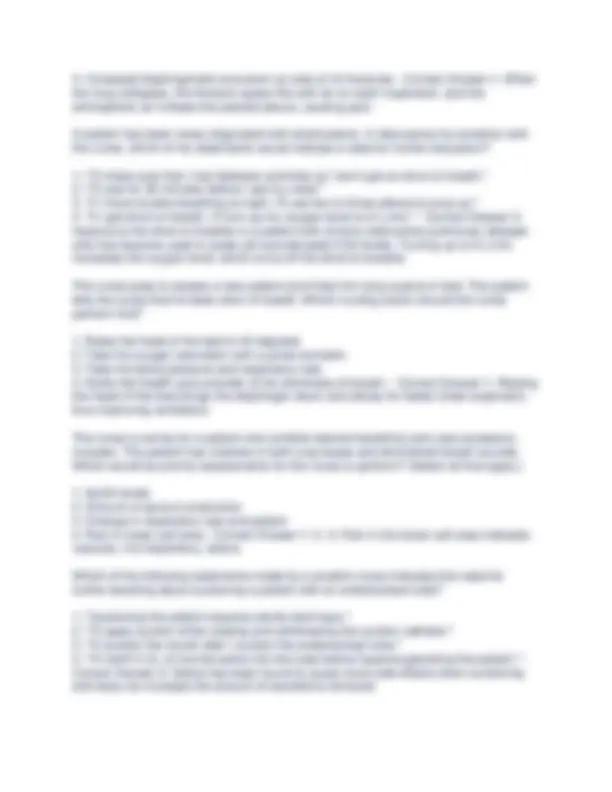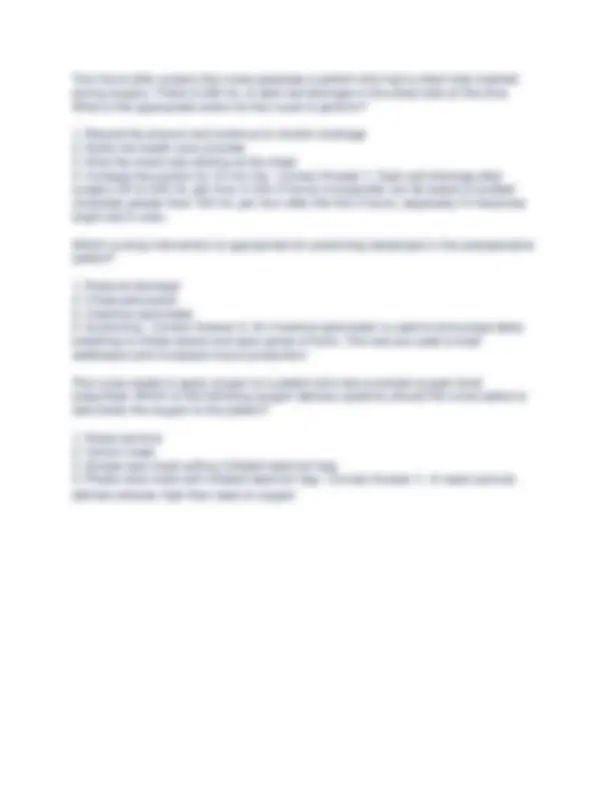




Study with the several resources on Docsity

Earn points by helping other students or get them with a premium plan


Prepare for your exams
Study with the several resources on Docsity

Earn points to download
Earn points by helping other students or get them with a premium plan
Community
Ask the community for help and clear up your study doubts
Discover the best universities in your country according to Docsity users
Free resources
Download our free guides on studying techniques, anxiety management strategies, and thesis advice from Docsity tutors
A series of multiple-choice questions and answers related to oxygenation, a crucial aspect of nursing practice. It covers various topics, including the effects of smoking on respiratory health, the impact of iron deficiency anemia on oxygen status, carbon monoxide poisoning, and the physiological processes involved in dyspnea. The document also explores nursing interventions for managing respiratory complications, such as atelectasis and pneumonia, and provides insights into oxygen delivery systems.
Typology: Exams
1 / 4

This page cannot be seen from the preview
Don't miss anything!



A patient who started smoking in adolescence and continues to smoke 40 years later comes to the clinic. The nurse understands that this patient has an increased risk for being diagnosed with which disorder:
Two hours after surgery the nurse assesses a patient who had a chest tube inserted during surgery. There is 200 mL of dark-red drainage in the chest tube at this time. What is the appropriate action for the nurse to perform?